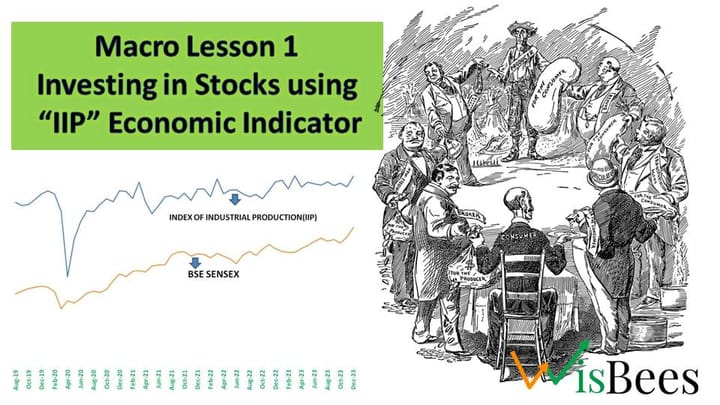"The Rise of Digital Payments in India: Key Players and Industry Growth."

Introduction
Imagine going to a Kirana shop in the 2010s with a 500 rupee note or taking a journey from point A to point B in an auto-rickshaw, where the fare happens to be an odd amount like 95 rupees. Perhaps you forgot to check your wallet before leaving the house or experienced the inconvenience of carrying bulky pockets jingling with coins, which often resulted in accidental overpayments or similar issues. However, digital payments have revolutionized the conventional 'change' money system, eliminating the need for cumbersome wallets filled with cash and coins.
All the aforementioned scenarios point towards one system known as the "Unified Payments Interface" or "UPI." However, prior to UPI, there were other significant components in the digital payments landscape such as mobile wallets, National Electronic Funds Transfer(NEFT), and the Immediate Payment Service (IMPS). These entities played a crucial role in facilitating the growth of the digital payments system. As of FY2022, an impressive count of approximately 72 billion transactions have been conducted.

So what lead to the rise of this new industry?
There are numerous factors and corresponding benefits when it comes to digital payments. One of the primary advantages is the enhanced sense of security and safety, which alleviates concerns related to loss, misplacement, or theft of physical cash. With digital transactions, individuals can enjoy a secure mode of financial exchanges. In fact, a significant 46% of consumers are willing to pay a service charge for the added convenience and security that digital payments offer.
This level of trust and reliability in digital payments was made possible with the introduction of UPI by NPCI in 2016. It marked a revolutionary milestone for the digital payment industry in India, bringing forth a new era of convenience and confidence in financial transactions.
Digital payments have thrived primarily due to the widespread adoption of smartphones and the growing number of smartphone users. In India, the penetration of smartphones is projected to increase from 65.8% in FY18 to an estimated 79.4% in FY23, and further to 86.7% by FY26. However, smartphones alone wouldn't be as effective without internet connectivity. In FY12, India had a mere 193.41 million internet users. Yet, with the advent of 4G and 5G networks, it is anticipated that the number of internet users will surpass 1 billion by the end of 2023. While these statistics are indicative, one can observe the prevalence of internet usage and smartphone ownership by simply assessing the number of individuals in their immediate surroundings who do not have access to the internet or possess a smartphone.
Also, due to the COVID-19 pandemic, there was a sudden surge in the industry as everybody preferred contactless payments.
Now let’s see how big this industry is and who are the key players in this industry!
As of April 2022, the UPI-based monthly transaction volume has witnessed remarkable growth, reaching 5,583.05 million transactions, with a total transaction value of Rs. 84,160 billion. This substantial increase is evident when compared to the figures of August 2018, which stood at 312.02 million transactions and Rs. 69.5 billion in value.
UPI has emerged as a favored payment option among people in India, with approximately 56% of individuals preferring its usage for transactions ranging from Rs. 1 to Rs. 1,00,000. This payment system offers convenience, security, and swiftness, enabling users to make instant payments directly from their bank accounts without the need for physical payment instruments.
As of April 2022, the UPI system witnessed a monthly turnover of 5.58 billion, equivalent to an average of 186 million transactions per day. The UPI industry in India is expected to continue its growth trajectory, with estimates suggesting a potential total transaction value of Rs. 41,100 billion by 2025.
The growth of UPI in India can be attributed to various factors, including the increasing penetration of smartphones, government initiatives aimed at promoting digital payments and financial inclusion, as well as the convenience and speed offered by the payment system. UPI has empowered millions of people in India to access digital payment services, contributing to the reduction of reliance on cash transactions in the country.

PhonePe, a prominent player in India's digital payments industry, holds the highest UPI usage share of 45% and boasts a user share of 62%. Its success can be attributed to its user-friendly interface, as well as its impressive valuation of $5.5 billion in FY22. In the September quarter of FY22 alone, PhonePe facilitated a staggering 10 billion transactions, with its annualised total payments volume surpassing $920 billion.
As of October 2022, PhonePe has become the preferred e-payment service for 60% of Indians. According to regulatory filings, PhonePe generated revenue of Rs. 1,913 crore during the first nine months of 2022.
Google Pay, despite being an international brand, holds a significant market share of 43% in the Indian digital payments industry, equal to that of PhonePe. It stands as the second-highest transaction-based company, processing 46.71% or 351.9 Cr UPI transactions in February 2023, amounting to INR 6.2 Lakh Cr. This accounted for 50.18% of the total value of UPI transactions during that period. In February alone, Google Pay processed 263.9 Cr transactions worth INR 4.24 Lakh Cr. With a preference from 68% of people in India, Google Pay's popularity and ease of use are evident.
Paytm, a leading fintech startup in India, holds an 8% market share in the digital payments industry and boasts a valuation of $16 billion USD. It stands out as one of the most preferred e-payment services, with 85% of users opting for Paytm.
Paytm holds a significant share of 14% in terms of UPI usage, showcasing its prominence in the digital payments arena. The company's robust performance is further exemplified by its revenue of 26.67 billion rupees generated from digital payments.
The advent of digital payments has revolutionized India's financial landscape, promoting financial inclusion and granting millions of people access to modern payment services. The introduction of UPI by NPCI in 2016 proved to be a game-changer for the industry, providing India with a competitive edge compared to other countries.
Leading players in the industry, including PhonePe, Google Pay, and Paytm, have emerged as strong contenders. These platforms offer user-friendly interfaces and innovative solutions tailored to meet the diverse needs of customers. Their presence has significantly contributed to the growth and evolution of the digital payments ecosystem in India.
| Broker | Type | Offerings | Invest |
|---|---|---|---|
 |
Discount Broker | Mutual Funds, Stocks, IPOs, Bonds | Know more |
 |
Discount Broker | Mutual Funds, Stocks, IPOs, Bonds | Know more |
 |
Discount Broker | Mutual Funds, Stocks, IPOs, Bonds | Know more |
 |
Service Broker | Mutual Funds, Stocks, IPOs, Bonds | Know more |



